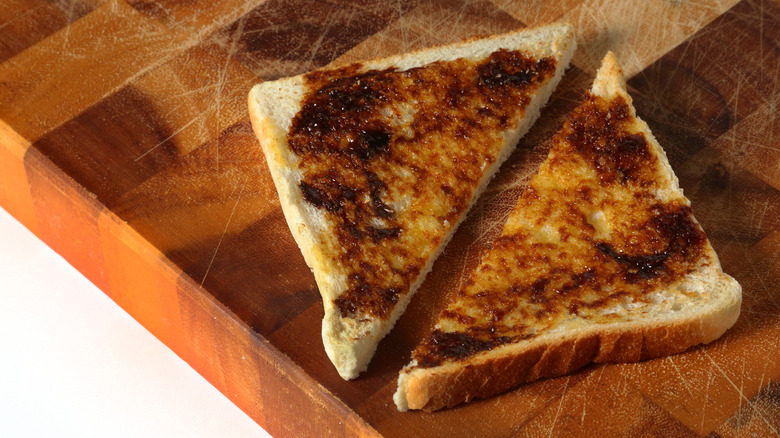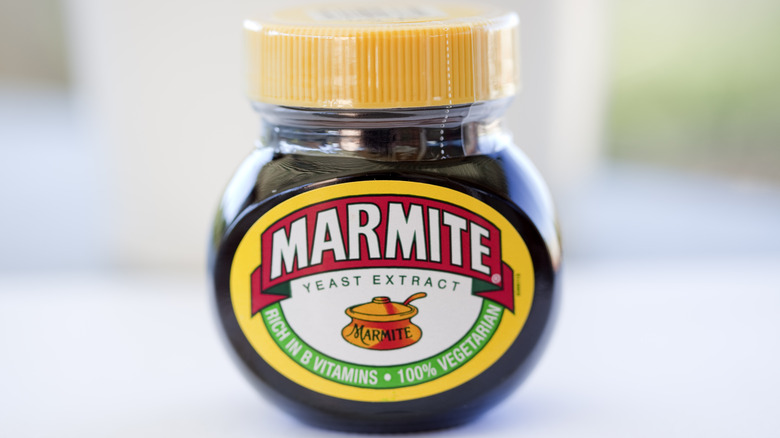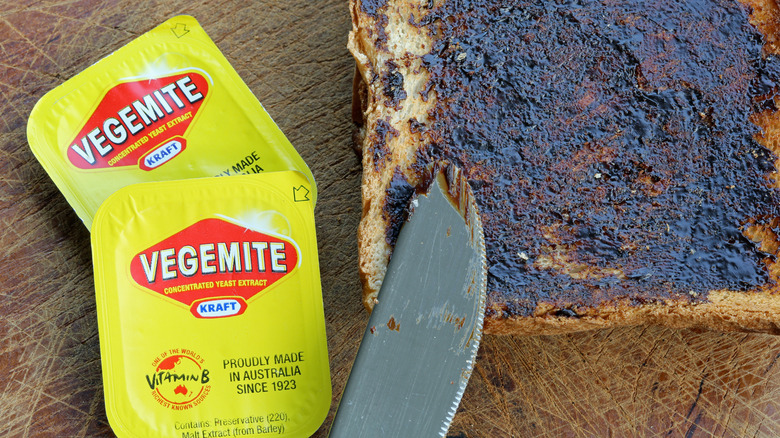Marmite And Vegemite: What's The Difference?
While extravagant, ingredient-heavy dishes certainly have their time and place, sometimes you just need a quick snack to get you through the day. A nice piece of toasted bread is the perfect way to fill up until the next meal for many people around the world, but depending on where you live, what you top that toast with may look very different. For example, Vegemite and Marmite are merely novelties to most Americans, but they are beloved spreads in their respective countries of origin. It is easy for those not in the know to conflate the two condiments, and though they certainly have their similarities, they have distinct textures, flavors, and culinary applications.
Both Marmite and Vegemite were invented to use up products that were being thrown out from beer breweries. They are both made from yeast extract leftover from the beer brewing process. Because of this yeast, both condiments have an extremely rich, savory flavor that can be overwhelming to those unaccustomed to it. The two spreads are typically topped on toast, crackers, or sandwiches, along with anything else the eater might imagine.
Marmite was invented first
The Marmite Food Company was established in England in 1902, shortly after the German scientist Justus von Liebig figured out how to create the spread from brewer's yeast in the late 1800s. Along with the yeast mix of barley, oats, and other grains, Marmite contains salt and many vitamins like thiamin and folic acid. Notably, Marmite contains a great deal of B vitamins. The flavor of Marmite is very salty, savory, and quite divisive. There are multiple flavors of Marmite besides the original, including truffle, peanut butter, and chil, and it is lighter in both color and consistency than Vegemite.
Marmite is deeply enjoyed throughout the United Kingdom. When it's not being used as a simple spread, it may be used as a vegetable dip, or even mixed into a soothing nighttime tea. The spread can also be found in prepackaged sandwich crackers. If you want to try Marmite (which you can usually find with some searching at most major grocery stores), it is recommended that you start with a very light layer over something plain like a piece of toast. The flavor is very intense, so it might take some getting used to.
Vegemite is from Australia
Hailing from Australia, Vegemite was created in 1923. One reason it was invented was to be a substitute for Marmite since the halt of trade during World War 1 made the condiment practically inaccessible in Australia. Like Marmite, Vegemite is made from leftover brewer's yeast and is rich in B vitamins, but it also contains vegetable flavorings like onion, carrot, and celery. This vegetable seasoning, along with malt extract, contributes to Vegemite's distinctive flavor. Despite being a vegan product, the combination of Vegemite's ingredients give it an almost meaty flavor that is considerably more umami than Marmite. It has also been described as being a bit bitter, and overall it's more intense than Marmite; vegemite's color is almost black, and it has a very thick texture.
In Australia, Vegemite on buttered toast is a popular breakfast food, and you can also find it accompanying everything from grilled cheese to roasted vegetables. If you live in the U.S., you may be able to find Vegemite at your neighborhood grocery store, but you'll probably have more luck buying from specialty or online retailers. Just as with Marmite, it's wise to eat Vegemite in moderation at first until you get used to the spread's potency.


